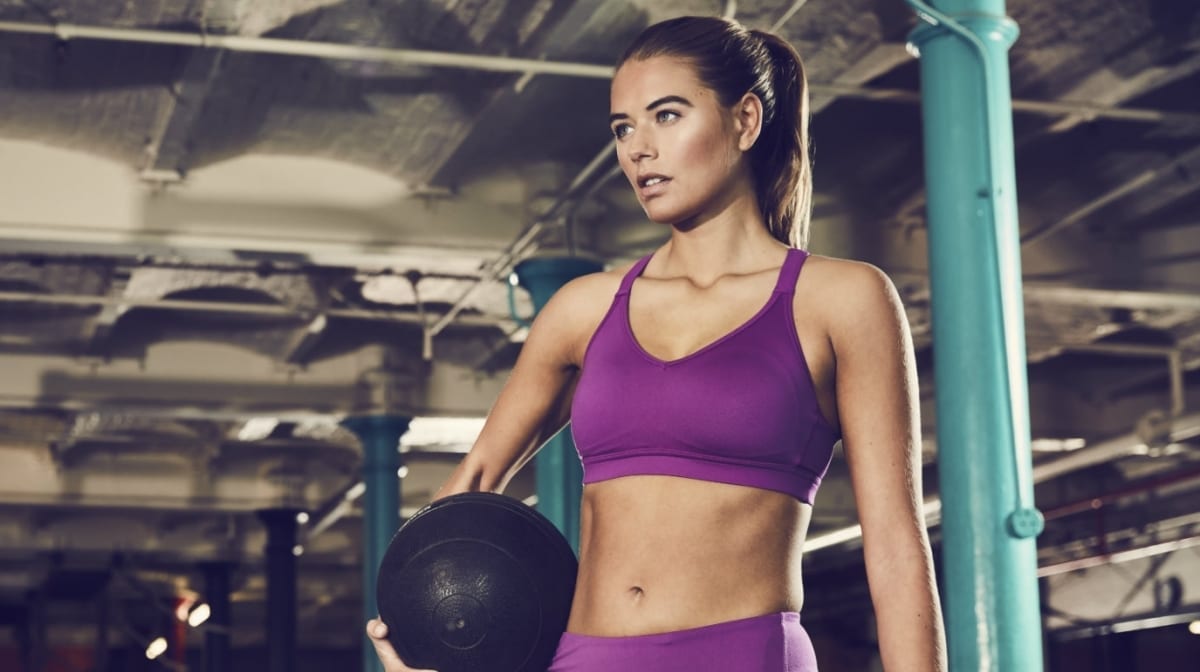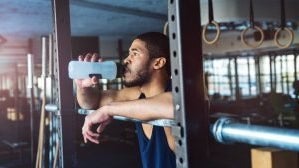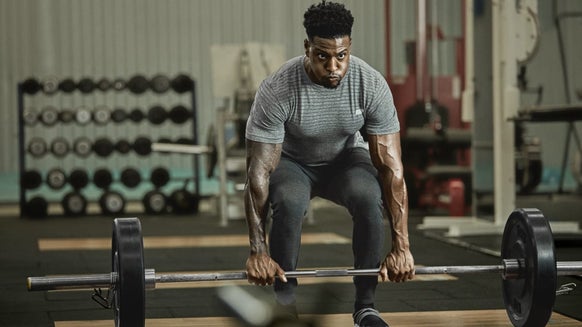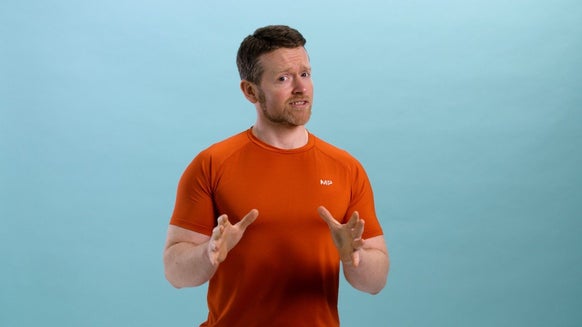Strength Training For Women | A Beginner’s Guide

There are a few understandable reasons as to why weightlifting can be difficult for some men and women to get into - such as not knowing what you should be doing, or feeling intimidated by the gym giants watching over the weights. This fear of the unknown should never stop you from reaching your goals though, so it's time to learn how to lift. It's time to tackle strength training for women so that you can start to see results.
By working out with weights, you could begin to lose fat and also gain strength if this is coupled with a balanced and nutritious diet.
Here are some more reasons you should love lifting weights:
- Allows for higher calorie consumption.
- Improves bone density.
- Builds muscle to sculpt curves.
- It can boost your confidence.
- It's fun and empowering.
Strength Training for Women
Firstly, it's time for some myth-busting on strength training for women. You may have heard that lifting will make you bulky, but this is anything but true. Differences in hormones between men and women have a large say in that. This is because men have higher natural levels of testosterone than women, which helps to build muscle — and I’m sure you know a lot of men who weight train without gaining as much muscle as they’d like to, so you shouldn't worry about bulk.
Some of the female bodybuilders you might have seen images of usually train most days, if not twice a day, have an extremely strict diet, and in some cases supplement heavily in order to achieve the desired look. So, don't think you'll be sporting bulging biceps and thunder thighs after a few squats or press ups — this body type is a choice and not a necessary result of weight lifting.
Here’s a deal I like to make with any of my female clients who worry about this (and there’s been a LOT!):
SPOILER: In over three years no one has taken me up on this yet!
The Weekly Workout Split
So now we’ve briefly gone through why weight training will benefit you, let’s move onto how to start. First of all, you need to decide how many times you can train every week based on your lifestyle and other commitments. That means consistently fitting it in around your job, kids, family, friends, etc. A good target is 3-4 times per week.
The next step is to decide what to include in your workouts on each day. One very popular way of training is to split the body into muscle groups and train one or two each session e.g. chest and arms, or back and shoulders. However, this will mean that you're only targeting each muscle group around once per week, whereas studies have shown that 2-3 times is much more effective.
So here are two better options for you based on training either 3 or 4 times per week:
3 times per week – 3 x full body workouts
4 times per week – 2 x lower body, 2 x upper body workouts
Hopefully now you've realised that strength training for women is a lot easier than you first thought. Now you’ve got an idea of how to set up your workouts, it’s time to decide which exercises to include. Let’s go through the different categories of exercises you need to include in your full body workout, with a few examples, along with an explanation for the technique of one exercise from each.
Lower Body
Weight training for your lower body means pretty much everything below the waist and can range from squats to deadlifts. There are so many different ways to train with weights that you'll never get bored of the same old routine. For some inspiration to get you started, here's some lower body favourites.
Hip Hinge
Example exercise: Glute Bridge
Targeting: Glutes (butt muscles), calves and hamstrings
1. Roll a bar onto your hips while lying on your back with your knees bent. You might want to use a foam pad around the bar, and a mat on the floor for comfort.
2. Place your feet flat on the floor with your heels close to your butt. If you feel your hamstrings working in the top position, then bring your feet slightly closer to your bum.
3. Start with your feet shoulder-width and adjust from there. As everyone being built slightly differently, some people will feel it better with a wider stance, and some with a narrower one — trial and error is the best approach here. You may also want to try comparing how it feels with your toes pointing forwards, or out at 45 degrees.
4. From here, tense your abs and squeeze your glutes. Now push as hard as you can through your heels and lift the bar up with your hips until your hips are fully extended and your shin is around vertical. Make sure you squeeze your glutes as hard as you can at the top, rather than using your lower back and over-arching.
5. Do the reverse to slowly lower the bar back to the ground while staying in control.
Deadlift Kettlebell Swing - Cable Pull through
Knee-Dominant
Example exercise: Goblet
1. Hold the dumbbell with your palms facing up (hence the ‘goblet’ part of the name), with your feet around shoulder-width apart and your chest forward, shoulders back.
2. Keeping a straight back, bend your knees and move your bum back and down, so your weight is on your heels. Aim to get your bum as close to the ground as possible. If you have a logo on your T-shirt, it should be parallel to the wall, not the floor (i.e. keep your chest facing forward).
3. Tense your abs and push back up through your heels to your start position.
- Bulgarian/rear-foot-elevated split squat
- Reverse lunge
- Walking lunge
- High step/reverse lunge combo
Upper Body
As we mentioned before, strength training for women and men includes working the upper body as well as the lower body. There are also many weight exercises for training your upper body depending on which muscles you wish to target. The trick is to start with light weights until you've cracked the movement before building up to something heavier to really test your strength. Here are some exercises to help you.
Horizontal Pull
Example exercises: 1-Arm Row
1. With any one-sided exercise, such as the 1-Arm Row, use your weaker side first. So if you’re right-handed, use your left hand first. We’ll use a right-handed person as the example here.
2. Place your right knee on a bench, directly below your right hip, and your right hand directly below your right shoulder. Now place your left foot on the floor out away from the bench.
3. Pick up a dumbbell with your left hand and pull your elbow up to the ceiling, keeping it close to your body, instead of ‘flaring’ it out to the side. Squeeze the muscle around your left shoulder blade, and then return the dumbbell back to the starting position (at arm’s length), while staying in control of the movement.
- Seated row
- Inverted row
- Bent-over row
Horizontal Push
Example exercise:
Use either steps, a bench, or a bar in a squat rack or Smith Machine. The higher the surface the easier the exercise, and the lower the surface the harder it’ll be.
1. Line your sternum (breastbone) up with the edge of the surface, place your hands on it around shoulder-width apart, and walk your feet out until your body is in a straight line from your head to heels.
2. Keeping your elbows tucked in towards your body at around 45 degrees (rather than flared out to the side), push through the heels of your hands until your arms are fully extended. Pause briefly at the top and return — while staying in control — to the start position.
- Dumbbell bench press
- Dumbbell flyes
Vertical Pull
Example exercises: Wide-Grip Lat Pulldown
1. This exercise is for a weights machine where you have a bar to pull down on while seated.
2. Get a solid grip on the bar with your hands outside shoulder width and place your legs under the cushioned support with your feet flat on the floor.
3. Keeping your body in an upright position pinching your shoulders together, pull the bar towards your sternum. Focus on getting your elbows down towards your hips and squeeze your lats. Return the bar to the starting position with your arms fully extended, while staying in control.
- Band-assisted pull-ups
- Chin ups
Vertical Push
1. Sit on a bench with the back completely upright, supporting your back, and place your feet just outside shoulder-width for stability.
2. Starting with a dumbbell in each hand push straight up, directly above your shoulders. Pause briefly at the top and return — while staying in control — to the start position.
- Shoulder press machine
- Barbell shoulder press
Conditioning
Example exercises: Farmer’s Walks
Exercise Technique
1. Pick up a relatively heavy dumbbell in each hand and stand tall.
2. Hold the dumbbells with a tight grip and slightly out from your sides, so you’re not resting them against yourself (this takes some of the strain off your core), and walk. Put the dumbbells down at the end or at any point you feel like you might drop them (for example, if your grip starts to tire).
- Battle ropes
- Sled/prowler pulls/pushes
Building Core Strength
Example exercise: RKC Plank
1. Get into position by lying on your front and then pushing up onto your elbows and balls of your feet. Next, squeeze your glutes (this will shorten your abdominals so they contract harder), and your thighs.
2. Imagine pulling your elbows and toes together and hold like this for the most intense plank you’ve ever done. This is much more about how hard you squeeze rather than holding it for a long time — think of it as more of a sprint than a marathon.
TIP: Try not to fall flat on your face when finished!
- Pallof press
- Swiss ball ab rollout
Supplements
You can achieve some success without using supplements, but they can definitely help you with your goals — especially when convenience is high on your priority list. When thinking about strength training for women and men, the one that’ll have the biggest effect on your goals will be whey protein.
Again, many women who are new to weights worry that they'll become huge if they have protein - however, unless you're taking extreme measures to pack on muscle mass, this won't happen. Protein powder is simply convenient for a pre or post-workout for strength training for women and men to rebuild damaged muscle, which will help you to continue working out regularly and seeing results.
There are enough flavours to suit any taste and it can be used on its own or in plenty of tasty recipes. Check out these delicious protein pancakes that'll keep you full until lunch for some inspiration.
Take Home Message
There you have it! A beginner's guide to strength training for women. Once you've got down a few key exercises, lifting can help you achieve all sorts of physical and aesthetic goals, without leaving you looking like the Hulk. Take your time to practice different exercises and be sure to ask in your gym for help so that you can make the most of your membership and the equipment on offer.







